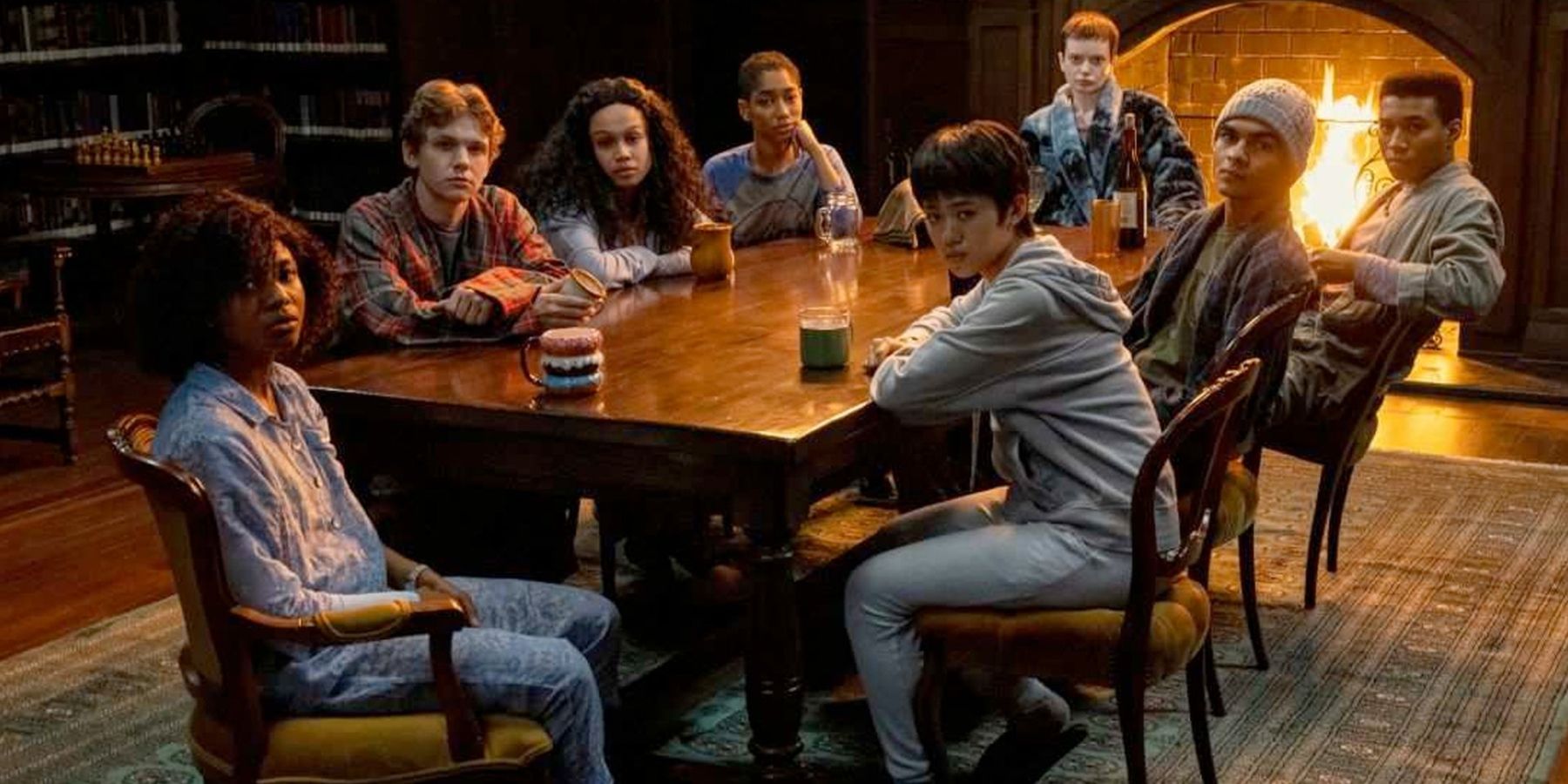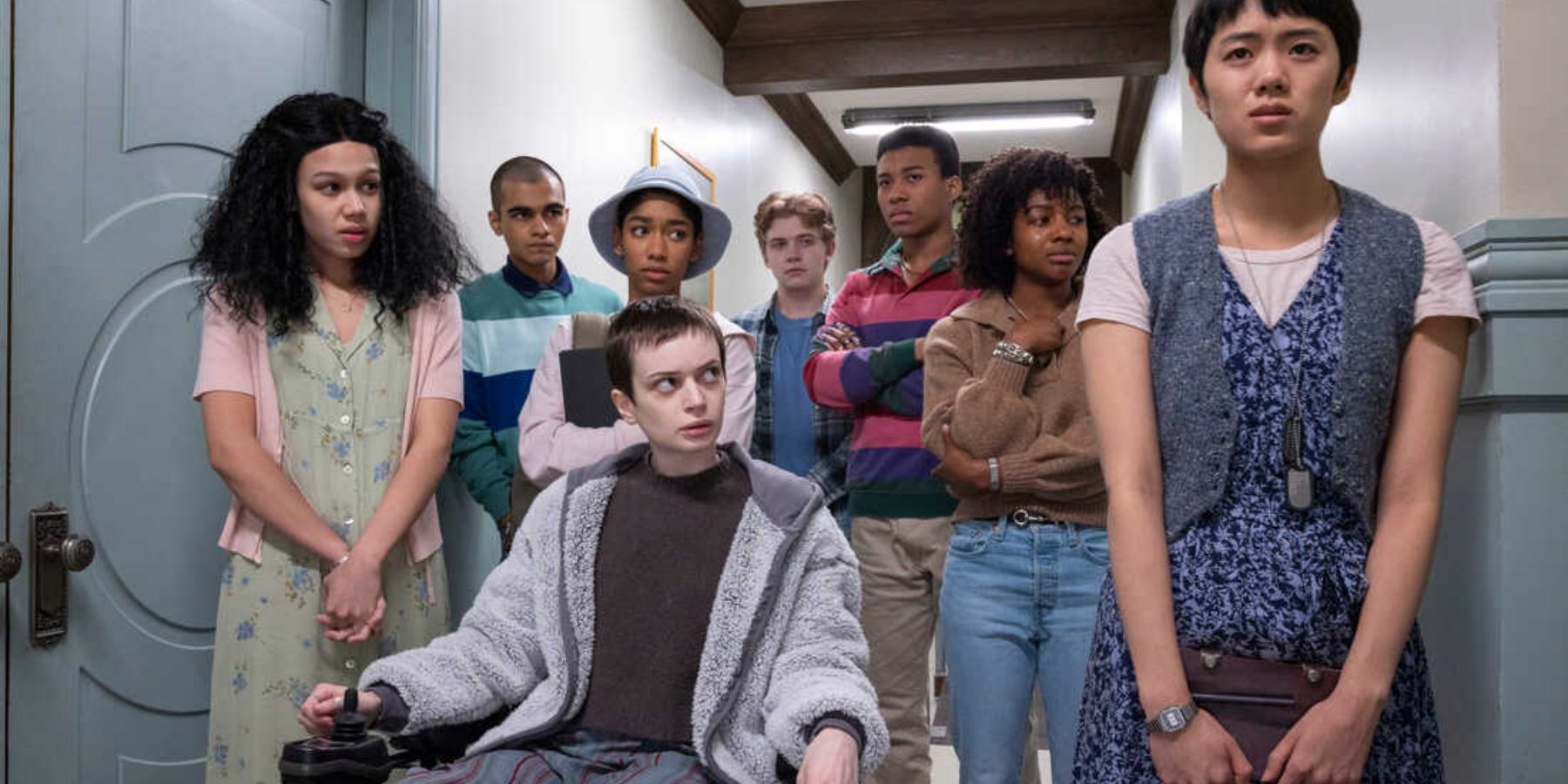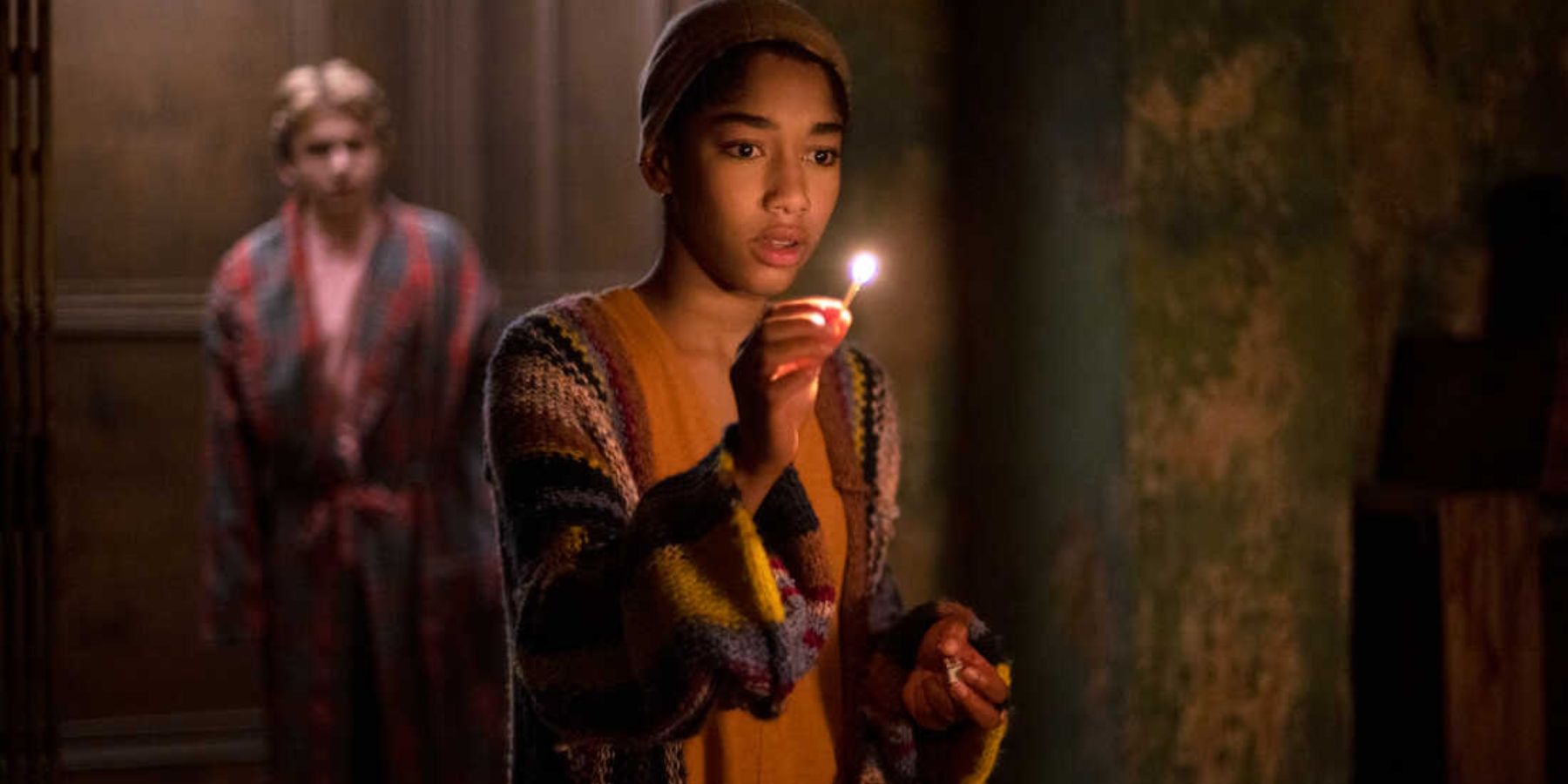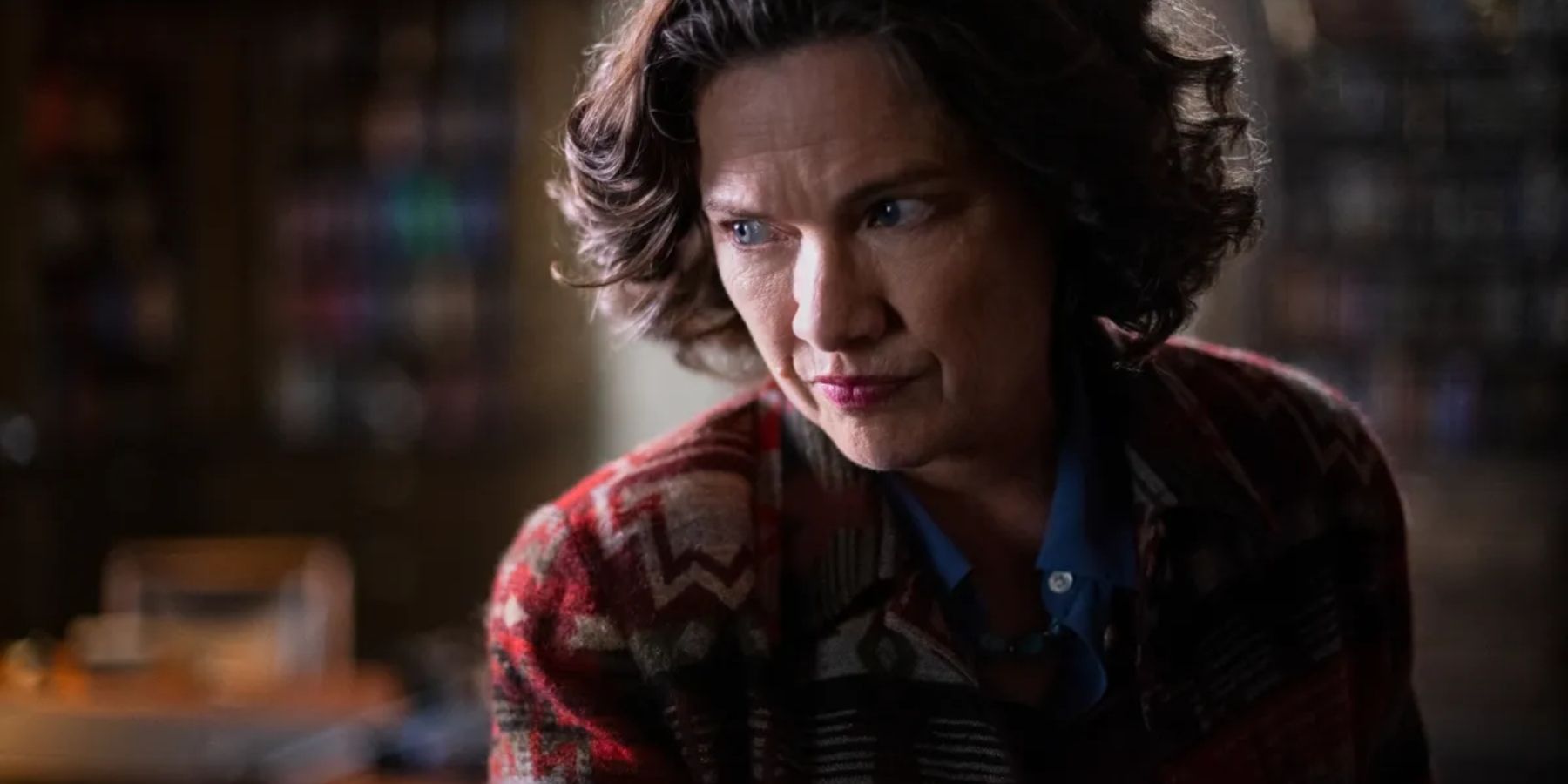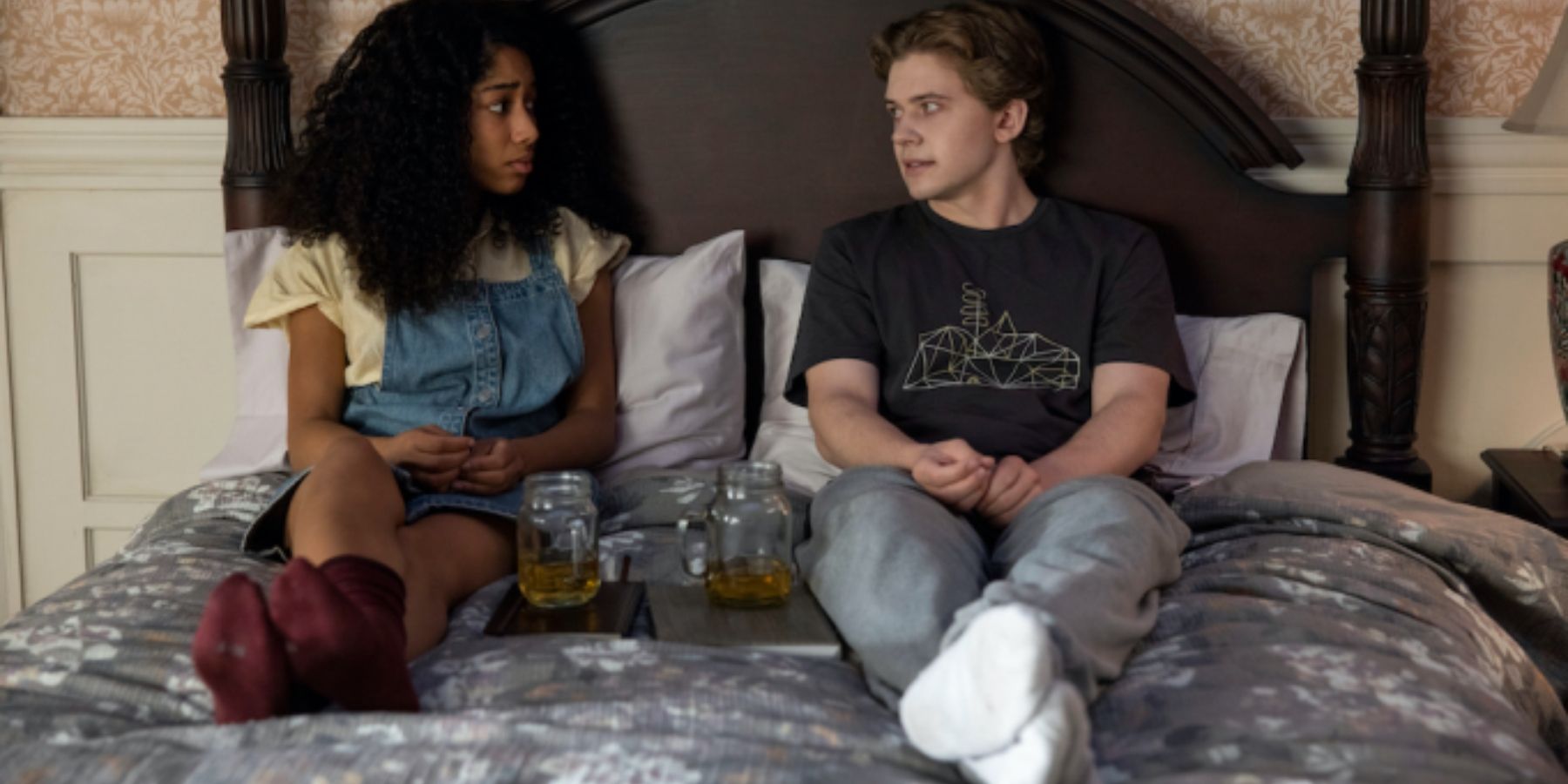The Midnight Club points out in the very first episode how cheap jump scares can be, and yet it leans heavily on jump scares throughout the remainder of the episodes. However, there may be a reason for this. The goal of any good horror show is to balance all the essential tropes and details that emphasize the tone and structure of horror, while also trying to bring unique elements to the genre.
Within the series, the characters talk about using jump scares to freak out the audience. Some express a distaste for such a cheap tactic, even though, as the show goes on, it reveals its use of several jumpy elements. Meta-criticism, in this instance, refers to how the series is based in the horror genre and its concept and structure reflect that, yet it makes a critique about the horror genre. (In this case though, the criticism was probably more to reflect the character that points it out than the story.)
“Don’t be lazy […] Startled isn’t the same as scared,” says Spencer about the first horror story told in the show, Natsuki’s story. “Maybe, but when that happens it actually releases a burst of adrenaline,” responds Natsuki. She then goes on to suddenly scream and hit the table, which startles everyone there, including Spencer, and proves her point.
This topic isn’t meant to be focused on the one critical comment, but rather the whole conversation, which expresses why the use of jumps is important to the genre. The dialogue seems to suggest that it is lazy to completely rely on jump-scares to carry a story; however, if they’re used properly, jump-scares can function as a tool to emphasize the monster, point of terror, or the theme. Furthermore, jump scares pull the audience into the story and make them feel present in it. They help create that sense of danger — a huge reason that horror fans are drawn to the genre.
Though The Midnight Club may, to some degree, criticize horror storylines that heavily rely on jump-scares to create fear, it’s difficult to avoid using them altogether because horror relies so heavily on the element of surprise. Items, animals, or beings popping out are simply a visual means of surprising viewers. Some other examples of how horror may surprise the audience include using soft or loud music to emphasize scary moments, unexpected twists, or humanizing the monsters in the story. All of these details help to keep the audience on their toes. Eliminating jumpy qualities would take away from the feel of the horror genre. Using jump-inducing scenes, sounds, and music is part of what creates the feeling of being. Taking them away would eliminate the suspense that comes with scary movies and shows.
Imagine watching a horror series that had no loud sounds or sudden visuals to make viewers jump. At best, the show would have a creepy feel to it, but the pacing would inevitably be affected. If the jumping elements were removed, the show would feel less urgent. While a slower approach can work for stories with something to build up to, horror tales that don’t have a reveal in the end rely on scary moments woven in throughout the story.
The jump moments are also a reminder of the impending threat that is the focus of the movie or show. Again, being on-edge and jumpy creates the sense of danger for horror viewers. In fact, the act of jumping at these moments illustrate just how effective the tactic is. It warrants not just a mental or emotional response, but a physical one. By jumping at these moments, we’re more easily able to feel like we’ve been put in the shoes of the character that is being threatened. Just as they jump at these moments, so do we — it pulls us into that experience. Even in the scene where the discussion about jump-scares takes place, after they talk about it and Natsuki continues her tale, there are multiple jump moments, some back to back. This creates an inescapable feeling for the character, and thus the audience.
The scene where the discussion takes place also sets the stage for the following story — perhaps the story the whole episode was setting up. Ilonka’s story is the next to be told, and in contrast to Natsuki’s, Ilonka’s tale does not use jump scares. Instead, her story creates a mysterious, festering effect where the spooky qualities build as the story goes on, leading to a creepy reveal.
By putting the two stories — the only two in this episode — back to back, viewers get examples of the two most common horror story structures. These two are the fast-paced, urgent structure, as opposed to the slow-burning spooky reveal structure. This gives the audience an idea of what to expect from the show and draws contrast between the characters. Additionally, the concept forces the viewer to consider what they know about horror stories and what is successful in scaring them.
As many horror fans are aware, not everyone is scared by the same things. Some need urgent, jumpy, adrenaline-pumping horror to feel immersed in the story. Others seek out horror stories that have a deeper message and linger with viewers after they’ve finished the series or film, haunting them in a whole new way.
Because of these variations in what is effectively spooky for viewers, many horror films or shows tend to try to incorporate elements of both structures. The American Horror Story franchise is a good example. The original AHS series caters more to horror fans that prefer a deeper, more reflective, creepy story, while American Horror Stories is more for fans that like a fast-paced, startling scary tale. The Midnight Club attempts to weave the two horror structures into one series in a way that creates a scary moment to frighten every viewer.

